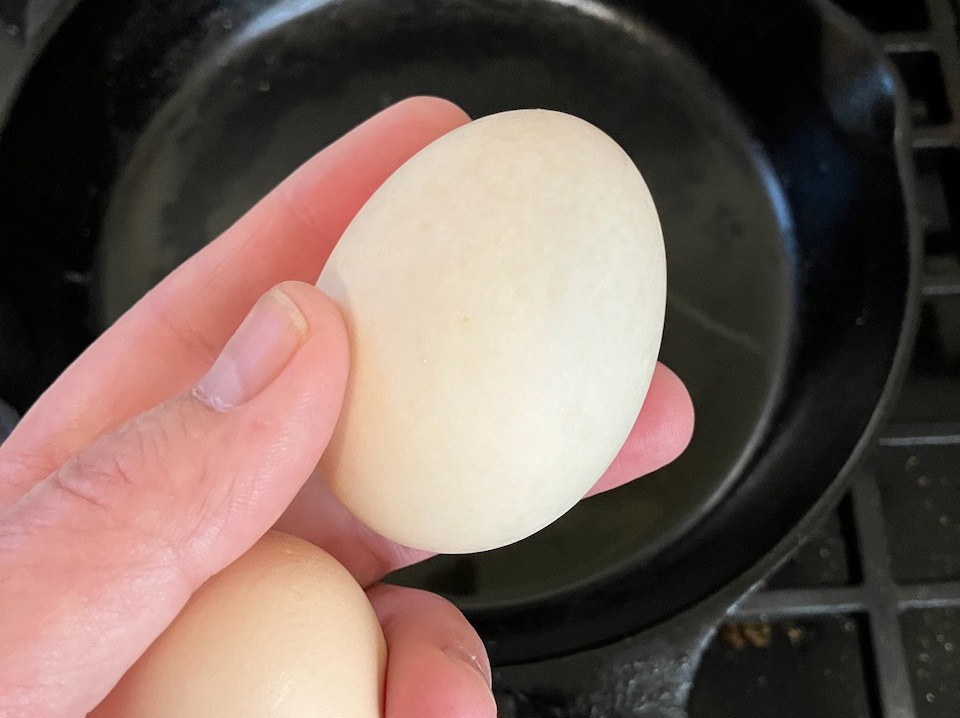Despite the convenience of international air travel, the cultural chasm between Europe and the Americas cannot be entirely leapt by a six-hour flight. No matter how pleasant the conversation across the armrest, or the drinks at the airport bar, a host of nagging inconsistencies are always tagging along in our proverbial baggage, whistling past the Customs counter on entry and departure. One such burden is bravely borne by the ordinary, unassuming egg.
One of the most well-rounded of foods, there is no kitchen staple more endearing and agreeable than an egg in a shell, waiting patiently for its big break. Not a living thing exactly, but alive with potential, the white alone contains 149 different proteins, suspended in disbelief over a yolk so rich in complex fats and rare nutrients that it’s survived several attempts at character assassination. Now that we understand that dietary cholesterol is not a significant contributor to blood cholesterol levels, the place of the egg in everyday cuisine is secure and undisputed, across every continent that is home to hens.
But its proper place in the kitchen, oddly, seems open to debate.
Just chillin’
In the U.S., eggs are always kept in the refrigerator, both at home and at the market. But in much of Europe, eggs are usually kept on the counter, unchilled, often for many days at a time. It’s enough to lead an American to nervously ask, is this practice fair or fowl?
Europeans seem quite unconcerned about their eggs’ fondness for disturbing foreign visitors. Below we see a display of fresh eggs that seem to be almost cackling in their satisfaction with residing in “plein air,” as they scandalously share an ordinary table with ordinary garden vegetables.

In fact, the European supermarket shopper is often greeted by lavish, room-temperature displays that seem to celebrate the egg’s freedom to roam obliviously to the weather forecast. Here it is possible not only to grab the proverbial dozen, but to select them for their individual personalities, placing as many or as few as you wish into a generic paper carrier.
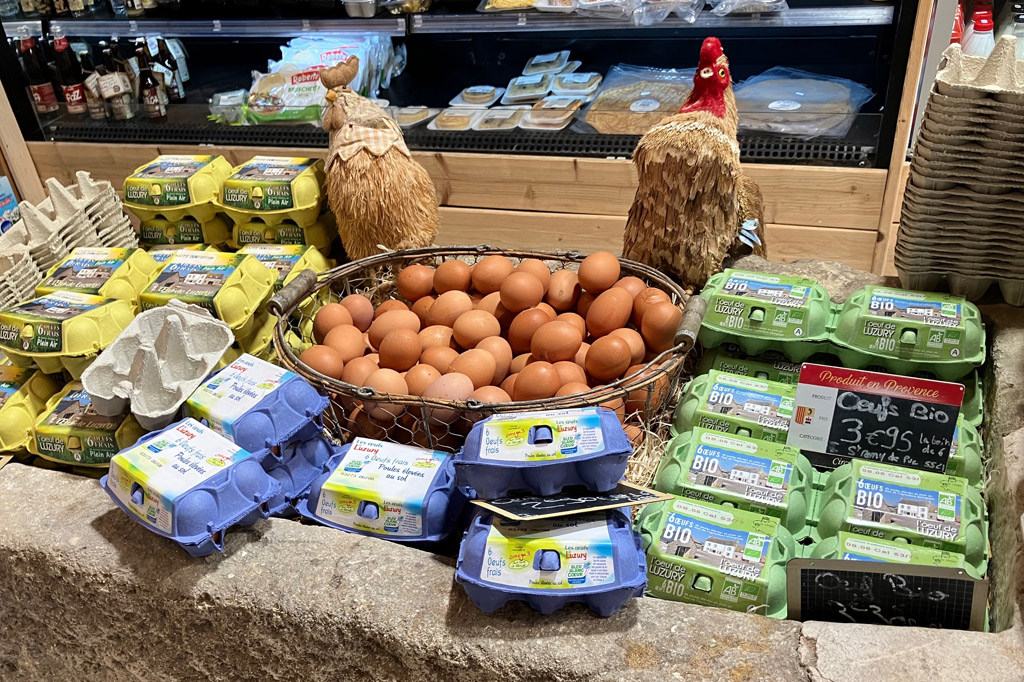
The Europeans would seem to have a point. In the wild, domestic hens and all of their gallinaceous cousins lay eggs in the balmiest of temperatures, and the yummy material within the shell stays perfectly fresh as the growing embryo gradually consumes it. If refrigeration were truly necessary, chickens would have had to discover the Carnot cycle to avoid going extinct. Yet here they are, laying with abandon, and showing no apparent grasp of thermodynamics.
Their secret: a natural, waxy coating on the shell, known as the cuticle (or bloom), that keeps bacteria from entering the egg.
Here’s where the humans get uptight. Eggs come from, well, an orifice, that is uncomfortably close to another orifice. People don’t want to get sick, or even just grossed out, so regional standards and regulations govern the sale of commercially farmed eggs.
On U.S. farms, all eggs destined for the retail market must be washed with a warm sanitizing solution, to remove any contamination by salmonella or other harmful bacteria. This causes the egg to lose its protective cuticle, but the authorities reason that the egg can simply be kept under refrigeration to keep it fresh thenceforth. This also means that sanitary standards on the farm can be relaxed, since every egg takes a bath before heading to town.
Faced with the same question, Europe came down a bit differently. By requiring generally cleaner conditions on the farm, and vaccinating the hens against salmonella, eggs can more safely rely on the cuticle to keep them fresh. This “leave it alone” mindset is sometimes also apparent in a lack of uniformity, as European eggs have not always been sorted into specific size categories, nor culled for non-uniform appearance, when encountered at the better markets. I would speculate that such handling is discouraged because it threatens the cuticle. Random smears on the shell and clinging bits of straw or grass sometimes also attest to their minimal handling and processing.
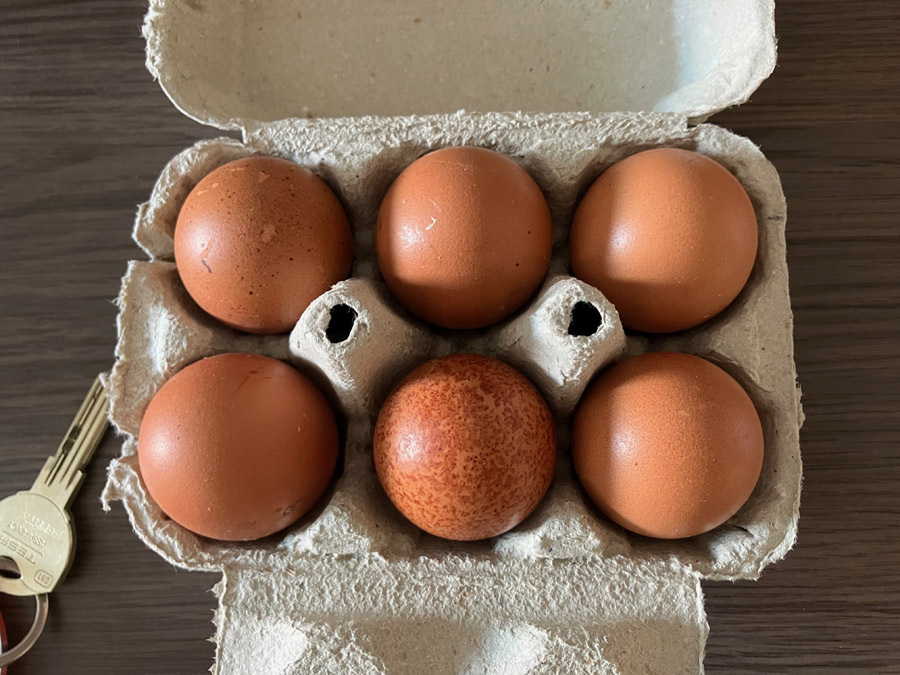
The counter-keeping of eggs is further revealed by the general availability of countertop egg holders, meant for home use. The ceramic egg holders shown below were offered at a craft shop in France, ready to lend order to the handful of loose eggs one might bring home from the grocery. I was tempted, but I knew they would have little utility in my American kitchen — where eggs always arrive in their own carton, and always go straight to the fridge.
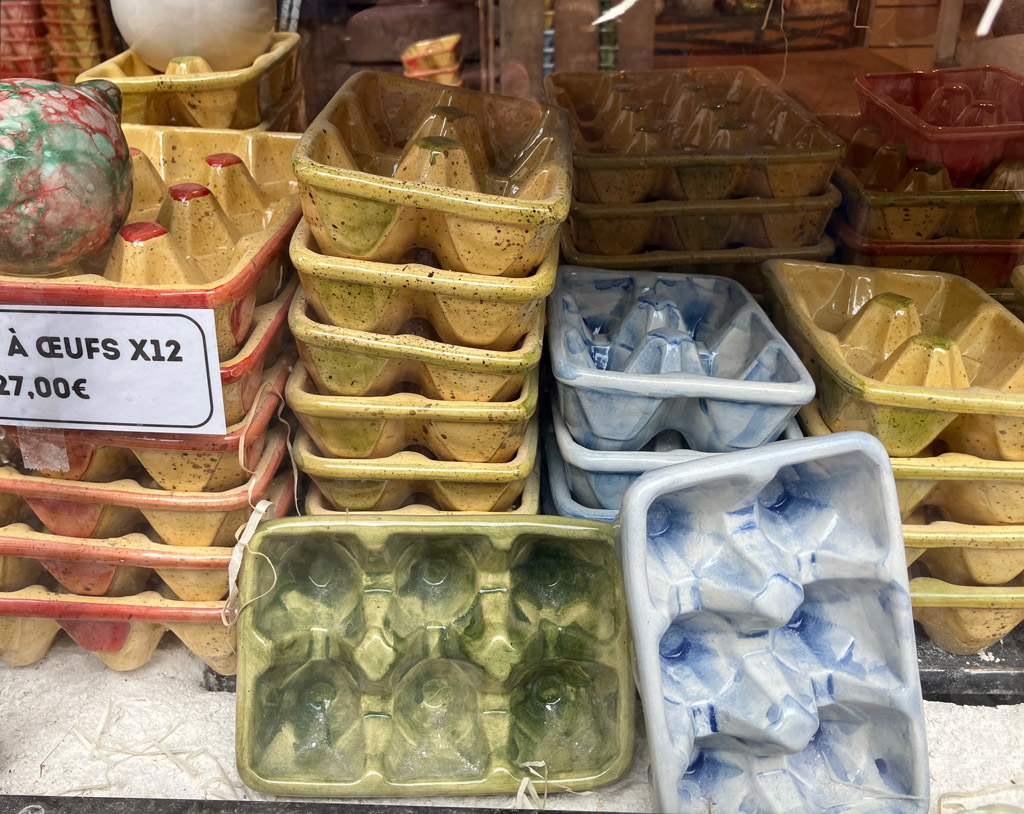
Even weirder: The “picnic egg”
As if the unrefrigerated, raw egg were not a strange enough sight, what would you think about an unrefrigerated, preservative-free, hard-boiled egg?
In parts of western Europe, this is definitely a thing, and it is known as the “picnic egg.” A possibly German invention, these are commonly found in groceries in Germany and the German-speaking parts of Switzerland, where I encountered them with equal measures of surprise and suspicion.

Yes, it’s Easter every day in this part of the world, judging from the variety of colorful options the casual shopper might encounter. A closer look at the carton below, found in a Swiss supermarket, shows that it is labeled in all three main languages of Switzerland, suggesting that the product is well known to all three groups. (Interestingly, the French version, “pique-nique”, reminds us that the word ‘picnic’ originates with the French).
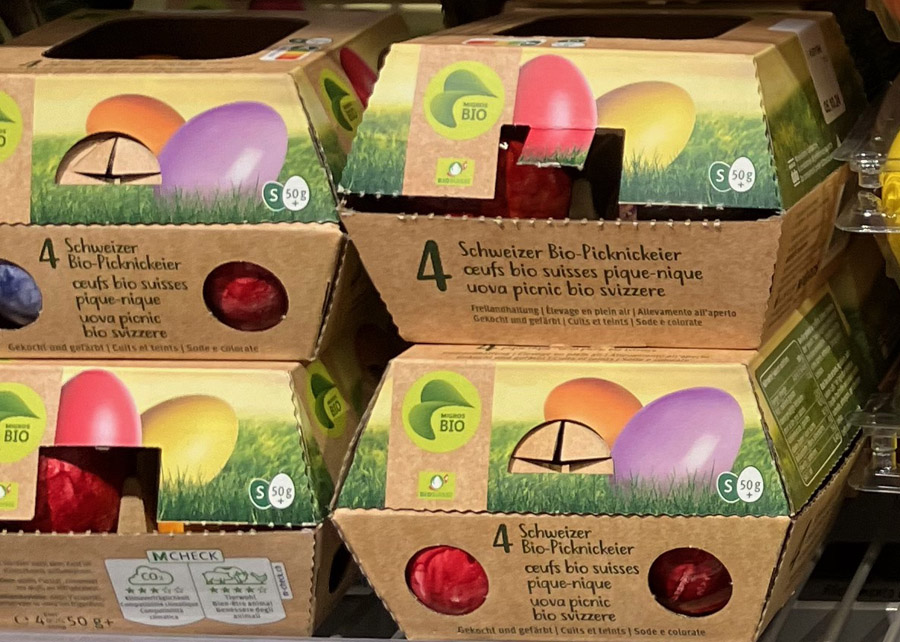
Was ist das?
How is such a product safe, without refrigeration? Boiling an egg certainly obliterates the cuticle, even more so than washing it.
The answer is to simply add the cuticle back — or at least, an artificial coating that achieves the same thing. Once boiled, the egg is perfectly sterile, and a quick application of a colorful, impervious coating ensures that it remains so. Picnic eggs are typically assigned a shelf life of about 30 days after processing — without any refrigeration at all. The bright color also seems to serve a retail purpose, helping to distinguish these boiled eggs from the raw ones, which often share the same shelf.
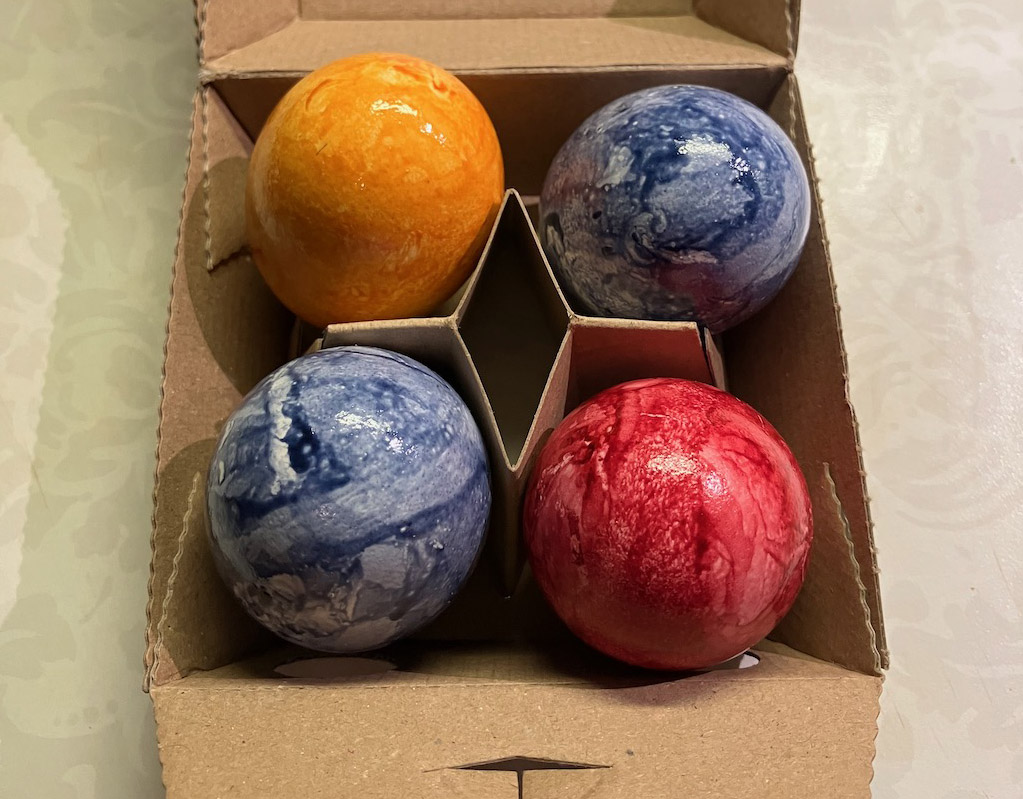
Jumping in
“I would not eat them here or there. I would not eat them anywhere.”
— from Green Eggs and Ham by Dr. Seuss
With some trepidation, I bought a package of four. Reassuring myself with pleasant memories of childhood Easters and children’s books, I cracked my first one, half expecting it to be green.
It peeled very easily. I also found that the colored shell was very helpful, because the contrast with the white of the egg made it much easier to find and remove any crunchy shell bits that remained.
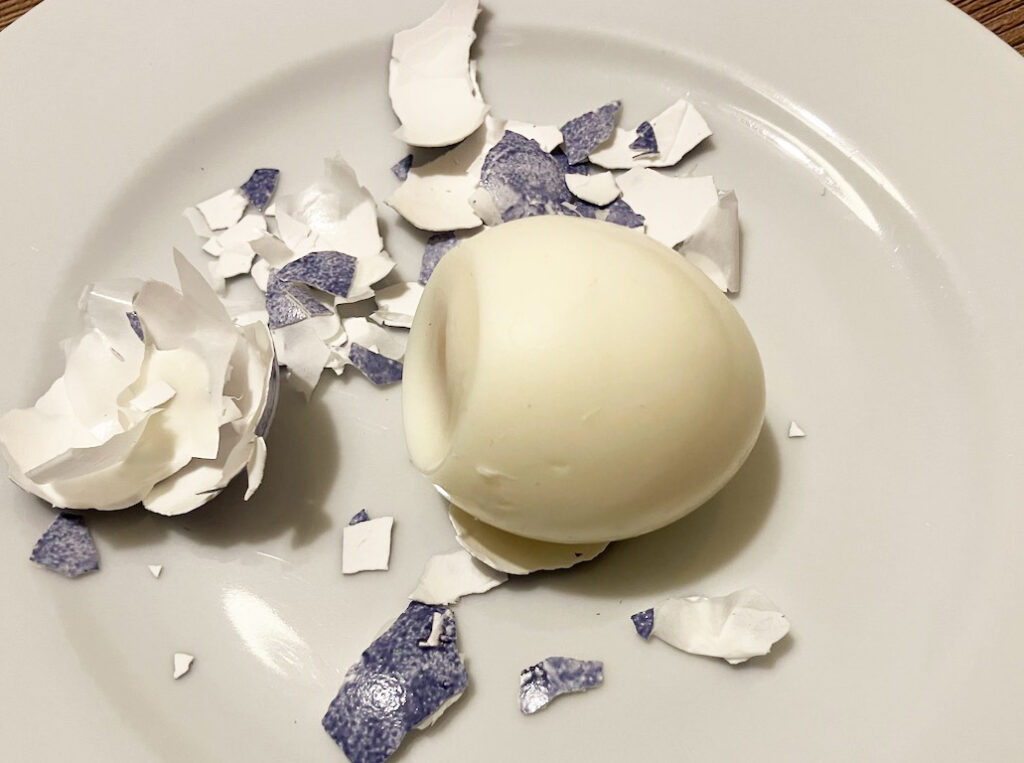
Then I cut it down the middle, just in case it looked or smelled strange. But it didn’t. It was perfectly cooked, and just as appetizing as any other egg, exhibiting no off-flavors, off-colors, odd textures, or unusual odors. The only thing that seemed strange was that I was eating it at room temperature — unlike the well-chilled eggs I’d probably be pulling from the fridge at home. Tasting something at the “wrong” temperature can make it seem a little different. That’s the only thing I noticed, and it wasn’t the egg’s fault.
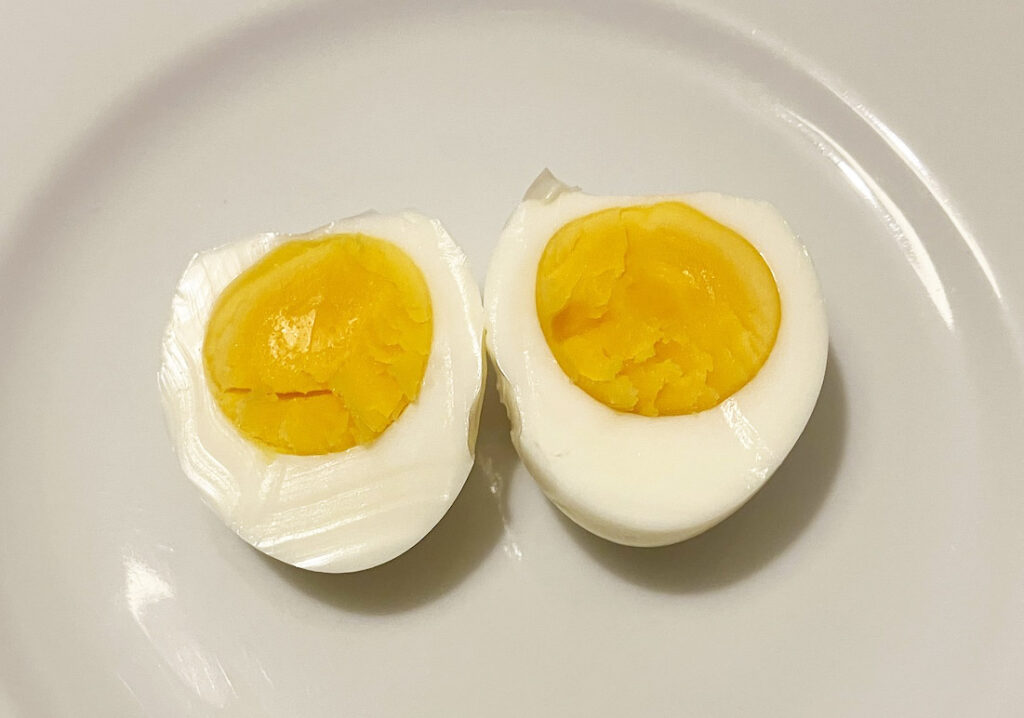
As I used up the other three, I gradually became comfortable with the concept, and soon I was buying more. As a travel food, they’ve become a convenient source of protein for mountain hikes, day trips, and wherever else I feel I might need to bring a snack. Like Sam I Am, I have eaten them on a train, in the rain, and on a boat (though not yet with a goat… but at this rate, knowing the countryside of Switzerland, it’s probably only a matter of time).
Don’t try this at home
As wonderfully subversive as it is to believe that eggs don’t really need refrigeration, the reality is, in many parts of the world including the U.S., they most definitely do.
If you’re reading this in North America, or in those parts of Europe (such as the Scandinavian countries) that have adopted the American plan, your breakfast should not include eggs that have not been refrigerated after leaving the store. American eggs are washed free of germs and the cuticle, in a binding bargain that dooms them to refrigeration for life. Only in most of the European Union (or possibly, at some rural farmstands) will you encounter room-temperature eggs that are safe to eat. And only in places like Germany and Switzerland will you encounter “picnic eggs” with proven aftercoatings that keep them safely fresh.
So don’t take this story as counterculture inspiration, but only as a curious intellectual example of how populations on two sides of an ocean can find different solutions to the same problem, and somehow still get along.
But “getting along” is often a fragile construct, best admired from a favorable corner. In other words, don’t try to sneak any kind of egg past Customs and Immigration, in either direction — you will be reminded, quite harshly, that even those worlds that comfortably brush past each other, still must not collide.
Article and photos Copyright 2025.
To be notified of new articles, visit https://whatshallweweird.com/subscribe/
